Okay, learning time.
Everyone knows about black tea, green tea, oolong, and so on . . . but I’m sure there are some newbies passing by this article that don’t know what pu-erh is. Well, I’ll tell you, but I’ll keep it brief. In short, it’s heicha (dark tea). Or rather, tea that’s meant to be aged. The leaves are processed in such a way that they’re only “mostly dead”.

Meaning, they still go through an enzymatic change (i.e. fermentation) well after processing and pressing. Pu-erh, specifically refers to aged teas from Yunnan province, China. Like champagne, pu-erh is not pu-erh if it doesn’t hail from this province. All pu-erhs are dark teas, but not all dark teas are pu-erh. Got that? No?
Well, read this article I did for Teaity, then. It goes into a bit more detail. And I won’t even get into the difference between raw (sheng) and ripe (shou). Let’s just say I usually only deal in raw, naturally-aged pu-erh, and that’s what I’m specifically sticking with here.
To date, the oldest raw pu-erh I’d sipped was eighteen years old. I had yet to pass the two-decade mark. People have told me what it was like, but I had yet to experience it for myself. What was even odder? No one could give me a definitive answer as to what the taste profile was for really old pu-erh. There was a consensus that pu-erhs between ten and twenty years of age took on a wine-like note. But older than that, opinions got less . . . lucid . . .
The only words I heard in common between all the old pu-erh connoisseurs out there were “old” and “clean”. That was a similar reaction held by fellow weird tea drinker, Greg “Norbu Tea” Glancy. He got in a few old old pu-erhs that I took notice of, and kindly provided me with some cake chisels to play with.
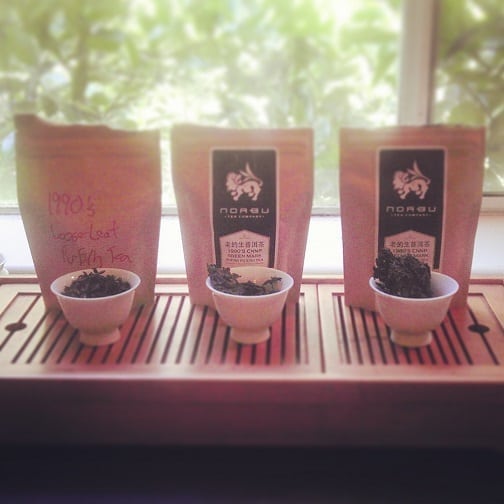
So, I decided to give two(or more)-decade-old pu-erhs my fair shake. Full disclosure: I’m not a pu-erh expert by any stretch. Hell, I don’t even know what it means when a pu-erh has a “Green Mark” or a “Yellow Mark”. For all I know, they could be martial arts belts. I can think of several people more qualified to deal with the nuances of really old pu-erh. (And a lot of Russians.) But I’m going to give it the old college try.
1990s Loose Sheng
The late-90s pu-erh leaves definitely looked their part. They looked every bit their two decades of age, old, ash-colored and earth-smelling. There was a bit of dust to the aroma, but it wasn’t unpleasant. It was like a “discovering-an-old-cupboard” smell.
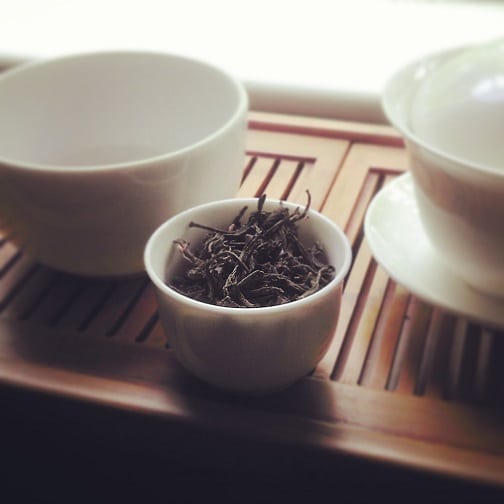
I brewed the leaves gongfu-style, and – given the age of the leaves – did a ten-second pre-wash before dipping into actual, drinkable brews. However, given that it was me, I drank the pre-wash anyway. Why let a cup go to waste?
The result was a pleasantly dark crimson liquor from each short steep, and an aroma of “ancient” from each cup. That same sensation reflected in the taste. The earth notes were strong but gentle, like getting a massage from a certified body builder. It wasn’t as dusty as I was expecting on first sip, either. Just pleasant. Yes, there was that requisite taste of “old tea”, but it was a calming one. This put me quite at ease.
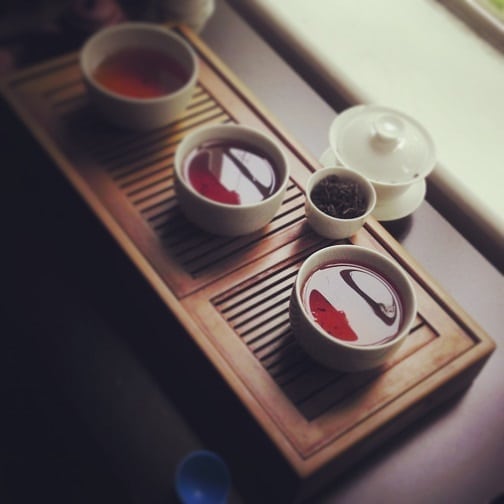
Now onto the cakes . . .
True story, when I went to brew up both of the old cakes, I lost track of which was which. Couldn’t tell ‘em apart by sight or smell. So, I had to do a re-brew on the first one. Not that I minded.
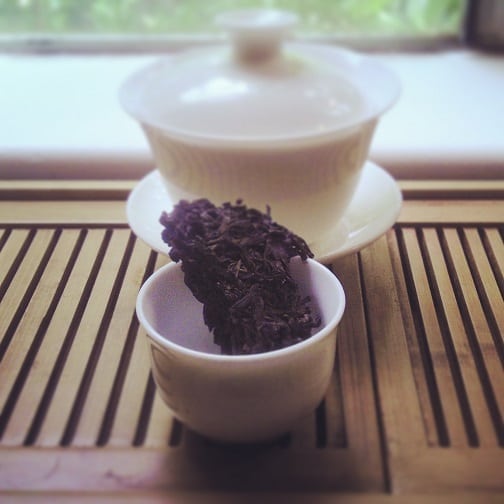
The chisels of the 1990s sheng cake were dark brown but loosely packed. It was easy to break pieces off of them. The aroma the chunk gave off was less “old” and more “vintage”. It was a fragrance that was hard to pin down. My nose could only tell my brain that the smell was “all-knowing”, if that makes sense.
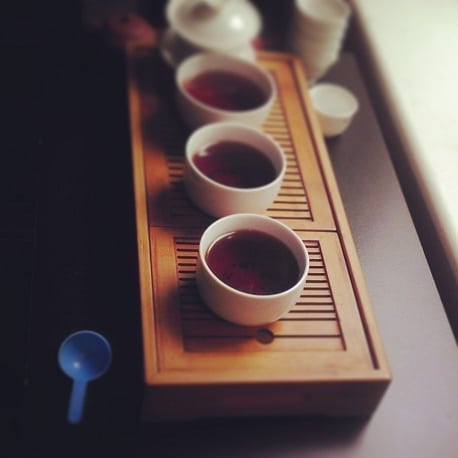
I gongfu’d three infusions, and each one (at around thirty seconds) brewed up pitch dark. Like a ripe pu-erh, but that’s where the similarity ended. The aroma was all earth, moss and mint. On taste, it conveyed that same earthiness, but with the added benefit of third-eye-opening depth. The intro was sage-y (both plant and scholar), like a Yunnan white tea, which transitioned to a forest floor-like sensation on the tongue. That trailed off to an herbaceous (if fungal) finish that just whispered, “Yum” . . . if creepily/seductively.
The final cake piece was also the oldest, dating back to sometime during the Reagan administration. Not sure which one. The pressed leaves were as dark, brown and earth-toned as the 90s cake, but the smell was older and cleaner. In fact, that seemed to be a running theme here – “old and clean”. Like that old Outkast song “So Fresh, So Clean”, only . . . y’know . . . retired. Point being! It smelled like something I wanted to drink.
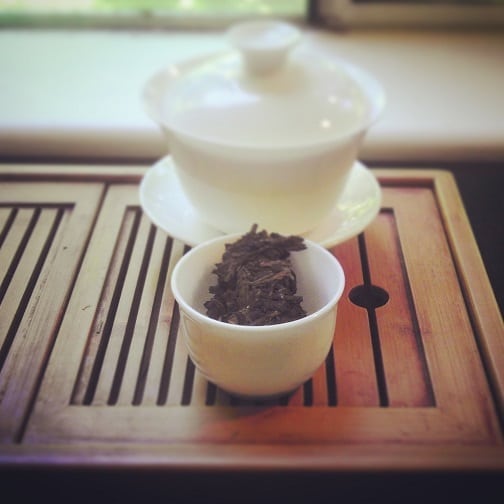
I gongfu’d it like the other two. Each successive infusion was darker than the other, leading to a pond of rust-brown almost-blackness in the last (third) cup. The first sip was like drinking distilled cedar; there was a definite coniferal note on the forefront. That transitioned to the requisite pu-erh earthiness, but with the added benefit of “something” toasty and tongue-numbing. An odd sensation of inner body warmth lingered in substitution of a cohesive aftertaste. If you could taste the inside of your soul’s face, I’m sure it’s something like this.

I tried all of these over the course of a week. On one day off, I had this ambitious notion of notching ‘em all off in one day. Problem was, after just one session with one of these teas, my tongue was too damn slap-happy to move on to the next one. It’s like being stoned, only you’re not as hungry. And you smell better.
In conclusion: If you’re new to pu-erh, start off young and work your way up. If you only care about wine-like flavors, anything around the ten-year mark is a good bet. If you’re ready for old and clean teas that’ll make you feel the inside of your soul’s face, then you’re ready for the two-decade “marks”.
Leave a Reply